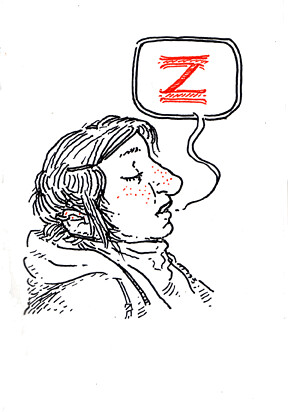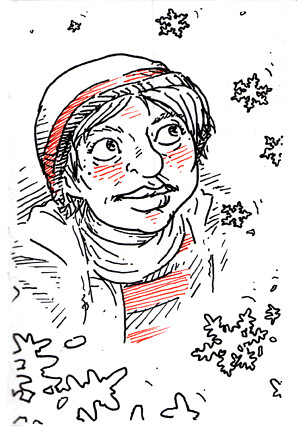So you know what I've been really into lately? Color!
I feel that in the past, coloring drawings has mostly been more of an obligation for me than something I generally enjoyed. I mean, don't get me wrong, I do like when things are in color, and coloring has never been a huge
chore or anything. I've even often been fairly happy with the end results. But until recently I've never really gotten
into the act of coloring a drawing the same way I've gotten into the act of drawing it. And now that's started to change.
There are probably multiple factors that contribute to this shift, but I feel like one of the big ones is the fact that I've been getting really into Dave Stewart's coloring on
BPRD. In the past, when coloring something, I've known that you probably want to have a baseline color for the object, and a darker shade of that same color for the underside and the parts that might be covered in shadow. Stewart takes this a couple steps further though. It's not a matter of just base color and shade - he'll often have a base color, a shade, a
darker shade,
and a separate shade for the light reflecting off of it. On average there is always
at least three different levels of shades to an object at a given time! And this is different then using a gradient or anything like that too. Each level of shading constitutes a solid object unto itself. This is shading in
layers! And it looks
awesome!
Yes, I realize this is pretty much just an interesting shading technique. But it strikes me as embodying an approach to coloring that makes a lot of sense to me. It's like sculpting with color! Coloring by degrees. And it makes the whole coloring process a much more deliberate affair. I think the reason I haven't enjoyed coloring as much in the past is because all I've been doing is putting color on the drawings - which themselves are already completed. I haven't been sufficiently
involved. With this approach, however, it's not just adding color, it's adding something to the drawing itself! You're adding further depth to it (both figuratively and literally). And the act of coloring thus becomes something closer to a continuation of the act of drawing, not just flatly coloring it in, but giving further life to it!
Anyway, I'm not sure if that fully makes sense or is exciting to anyone else. Maybe I'm just pointing out something super obvious, that I'd somehow never noticed before. But still it's exciting for me. And it makes me actually
want to color things more. So I figure that overall, it can't be all that bad a thing.







